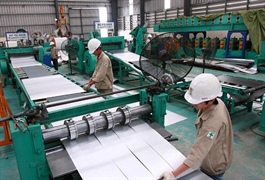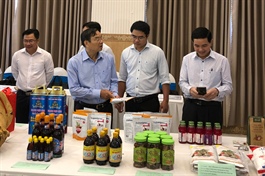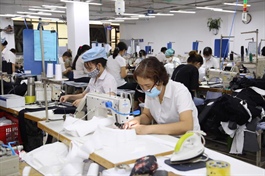Investors getting on board the LNG train
Investors getting on board the LNG train
Liquefied natural gas-to-power remains an important part of Vietnam’s energy transition story, and investors – both local and international – continue to demonstrate a strong interest in the sector.
Under the latest draft of national Power Development Plan VIII approved by the Appraisal Council in late April, thermal power using domestically-produced gas (including gas turbine thermal power plant) and liquefied natural gas (LNG) – excluding flexible gas turbine power sources using LNG – by 2030 will see the total installed capacity of about 29,700-38,800MW, accounting for approximately 24-29 per cent of total electricity production.
By 2045, the total installed LNG capacity will be about 43,300-46,300MW, producing 233.6-246 billion kWh and accounting for 20-24 per cent of total electricity production.
This policy trend was evidenced by Vietnam’s announcement last November to target net-zero emissions by 2050, in which LNG is regarded as a more promising method of reducing carbon emissions that can also attract foreign and local investors.
At the Vietnam Business Forum earlier this year, the American Chamber of Commerce stressed that gas can serve as an important transition fuel and help Vietnam build a bridge towards clean energy. The transition will take time and in the near term, the development of offshore gas-to-power projects and others have the potential to provide both economic and environmental benefits.
Good decision-making and new technologies with gas and renewable energy mix could also enable Vietnam to tackle the growing environmental concerns, according to those who took part in the forum.
Several deals have already been in the works in this regard. In a meeting between AES and PetroVietnam Gas (PV Gas) late last year, Bernerd Da Santos, executive vice president and CEO of AES said that the signing of a joint venture agreement to develop the Son My LNG terminal project between AES and PetroVietnam is “an important milestone for the development of Vietnam’s LNG energy source”. At the same time, it also plays an important role in reducing emissions in Vietnam in line with commitments at COP26.
AES has maintained its commitment to Vietnam’s economic and social growth by investing in reliable and sustainable energy solutions, such as the development of the Son My 2 gas turbine power plant and the Son My LNG terminal venture.
Vietnam has nearly 20 LNG-fired power plants in the pipeline nationwide, (see chart), including Delta Offshore Energy’s Bac Lieu LNG-to-power project and LNG Quang Ninh, which is being developed by PV Power, Colavi, Tokyo Gas, ExxonMobil and others.
However, some of these initiatives have yet to specify a source for their fuel. According to PV Gas, in 2021 it signed eight master sale and purchase agreements with suppliers from the Americas, Europe, Australia, the Middle East, and Asia-Pacific and is continuing to negotiate, unify, and sign deals with other LNG suppliers around the world.




















